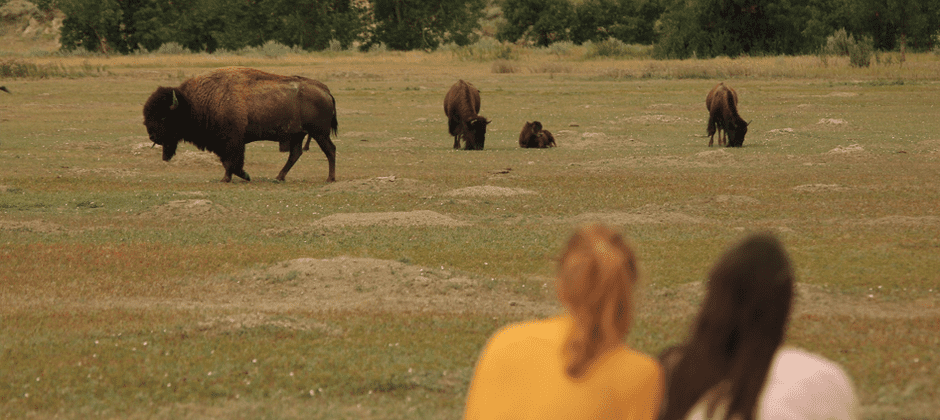Share this article
Could a ‘Bison Management System’ address climate effects?
After surveying managers and conservationists, a researcher who has documented bison shrinking due to climate change is proposing a network for bison stakeholders to share their knowledge.
“What we propose is to increase information exchange to solve an identified issue of accelerating climate change,” said Dr. Jeff Martin, director of research for the recently founded Center of Excellence for Bison Studies at the West River Research and Extension Center in Rapid City, South Dakota.
A “Bison Management System” could serve as a “coalition across sectors and across small and large entities have to have more highly coordinated sharing of information,” Martin said.
In a published in People and Nature, Martin and his team surveyed bison conservationists and managers from the public, private and nonprofit sectors to determine how climate is impacting the populations they manage and how easily managers can respond. They also asked questions to measure environmental values, attitudes and practices to try to determine what adaptive actions might be possible.
“Climate change is going to affect strategies for grazing management, grazing leases that expand or contract grassland size, and access to water,” Martin said.
His previous research focused on how climate changes is causing bison body size to shrink. One study focused on bison size changing with rising global temperature over 40,000 years. A follow-up found a relationship between declining body size and drought over the last 50 years. In a third paper, he used thermal imaging to determine how the animal’s energy use was related to shrinking body size and climate change over the previous five years. These varied windows of time enabled him to model bison body size into the future.
“We estimate that by the mid-century, bison will be half the size as they are today,” Martin said. That could have repercussions for the animals — slower reproduction, increased vulnerability to disease, predation risk and more effort to conserve energy. It could also affect conservation efforts, he said, if park visitors find smaller bison less charismatic.
In this latest survey, Martin and his colleagues wanted to see what bison managers in different sectors — from federal agencies to private ranches — could do to respond to climate change. Managers across the spectrum shared concerns about access to grazing leases and water to grow their populations, Martin said. And they agreed that access to new data, from scientific research to grazing strategies, was important.
Martin proposed a Bison Management System to bridge the needs of managers who handle bison as wildlife and those who manage them as livestock.
The private and public sectors worked together to bring bison back from the brink of extirpation in the last century, Martin said, and a similar approach is needed again, “but we need to now use technology to our benefit.”
Header Image: Visitors watch bison graze at Theodore Roosevelt National Park. Researchers are proposing a network to help public, private and nonprofit bison managers respond to climate change. Credit: Perry S. Barboza








